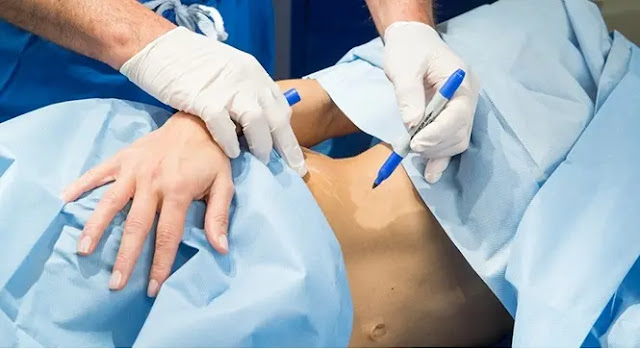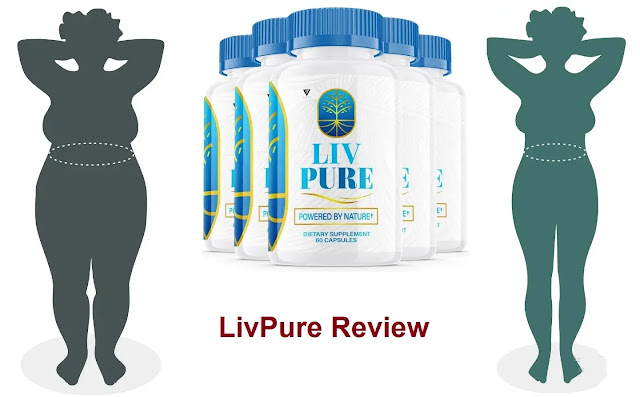Vitiligo is a skin condition of white patches resulting from loss of pigments. Any part of the body may be affected, and it spreads gradually and parasymetrically. Examining under the microscope a fragment of skin taken from the achromic area, the only certainty is the absence or damage of melanocytes and the complete absence of melanin –the pigment responsible for the color of skin, hair, eyes, and some mucosal tissues. Melanin is produced by melanocytes, cellular elements disseminated in the innermost skin layer, the basal layer.
Melanocytes are photoreceptors, i.e. cells that allow the skin to absorb the light energy required to trigger all the processes promoting melanin production. Melanocytes, therefore, play a crucial role both in the onset and in the healing of vitiligo. For still virtually unknown reasons melanocytes can be indeed reduced in number, replaced by other cells or unable of producing melanin. In this case, the cells moving up from the basal layer to the upper skin layers will be lacking in melanin and, once they reach the surface, they will cause an achromic patch. This patch can be re-pigmented through a therapy able to restore or reactivate melanocytes.
What is vitiligo?
Vitiligo is a common chronic and progressive dermatosis, characterized by skin patches with shortage (hypochromia) or absence (achromia) of melanotic pigmentation. The patches present a pink to milk-white shade and sharp, often hyper-pigmented, edges underlining the color contrast with the surrounding normally-pigmented skin (Pic. 1, Pic. 1bis). These patches are usually symmetrical, may appear in any part of the body, and their onset does not depend on sex or on the color of the skin and hair of the affected person.
How many people suffer from vitiligo?
Statistically, the World Health Organization states that vitiligo is estimated to have a 1% incidence on the world population (e.g. almost 1,000,000 people suffer from this disease in Italy) with no geographical, racial or sex differences; it can be said that no human race is excluded. The most affected age range is between 20 and 40 years old, even if pediatric cases have been rising recently. This condition is rarely present at birth, so it can be defined as acquired, even if it can appear during the first days of life. It has a family trend in about 13-15% of the cases.
Is vitiligo a contagious disease or not?
Vitiligo is almost always progressive and does not heal spontaneously (just in rare cases). But it is a painless, noncontagious and absolutely benign dermatosis; it does not compromise the overall health status, but it can be psychically and socially disabling, as it causes diffuse and evident imperfections. In some cases its presence may indicate associated autoimmune diseases (e.g. thyroiditis, autoimmune chronic gastritis, diabetes).
what are the main causes of vitiligo?
Even though this disease has been known for centuries, its causes are still unknown. Plutarch wrote that Lucius Cornelius Sulla –the Roman general lived in the I century B.C.- had a “rough and white-patched facial skin” and that an insolent Athenian said about him: “Sulla is a blackberry covered in flour”. There has been much speculation about the causes of vitiligo; according to the majority of researchers it is due to genetic susceptibility and to the triggering action of stress conditions, prolonged physical traumas or micro-traumas or other pathologies. What is sure is that multiple factors are involved in the etiopathogenesis of vitiligo. A special medical branch, known as psycho-neuro-immunology, studies the interactions among psyche, nervous system, immune system and skin. Vitiligo too could form part of that group of skin diseases caused by an impaired balance of these strictly interdependent elements.
What are the best medical treatments for vitiligo?
1. Therapy with topical and systemic steroids:
Steroids have been used to treat vitiligo locally on isolated patches and in various compositions: 1-2.5% hydrocortisone for sensitive areas (such as face or armpits); 0.05% clobetasol dipropionate or 0.1% betamethasone valerate for other areas. Even if results are considered positive, topical steroid therapy involves a number of side effects (telangiectasias, skin atrophy, striae) and may cause relapses. Therefore it is not considered as a valid therapy both for its negative benefit/side effects ratio -for the low patient response- and for the difficulty in treating widespread areas. The same applies to the oral intake of steroids (e.g. triamcinolon, ACHT, prednisolone): these have provided scarcely conclusive results and collateral phenomena (skin atrophy, telangiectasias).
2. Therapy with folic acid and vitamin B12:
A 1992 research on the oral intake of folic acid combined with the parenteral administration of vitamin B12 provided good results without side effects observed. Anyway, this kind of study still needs to be confirmed.
3. Total skin depigmentation:
This treatment is only recommended for extreme cases: widespread vitiligo, affecting over 40% of the total skin surface and proved to be resistant to every other treatment. In such cases, patients should be told that total skin pigmentation is irreversible and permanent, requires continuous use of effective sunlight filters to prevent repigmentation and, most importantly, can cause serious contact dermatitis, dehydration, erythematosus, pigment spots, black spots after long periods of treatment, irritating dermatitis to varying degrees, heartburn and itching. Residual skin pigmentation is eliminated through a cream containing either 20% mono benzyl ether of hydroquinone (MBEH) or hydroquinone, two powerful skin sensitizers. The excessively white skin color is reduced with the oral intake of beta-carotene.
What are the best Surgical treatments for vitiligo?
It must be first and foremost noted that surgical treatment is not recommended for all vitiligo patients and that the failure of every other therapy and, most of all, the ascertained stability of the disease are the essential prerequisites. In this regard, the following evaluation criteria are valid: there were no new patches in the previous two years for skin disease screening. The possibility of spontaneous internal or peripheral re-pigmentation of vitiligo spots; lack of enlargement of already existing spots during the same time period; vitiligo unilaterally testing a small implant, i.e. a simple procedure for accurately evaluating the expected positive or negative surgical response.
1. Surgical re-pigmentation:
Can cause side effects and complications: scars, usually minimal, not rare in donor areas when in-vitro melanocytes culture techniques are used.
Cobblestoning, i.e. a phenomenon consisting in the appearance of variously sized protrusions, once the healing has occurred.
Hyper-pigmentation or hypo-pigmentation of the transplanted areas, phenomena that vary according to the subject, generally of minor entity but common to all the methods used.
Especially in case of widespread patches, surgical treatment can result ineffective. It is contraindicated in children and not recommended on emotionally unstable patients.
2. Autologous skin transplant:
Consists in transplanting some skin sections taken from normally-pigmented areas of the patient into the vitiligo patches. Transplant is usually performed 2-3 days after preparing the receiving area using various surgical techniques (preparation of very thin skin strips, formation of blisters by means of cryoprobes or suction, full-thickness punch, minipunch). Re-pigmentation occurs gradually, starting from the edge of the transplanted skin fragment. A few PUVA therapy cycles may accelerate the re-pigmentation and uniform the color of the transplanted skin areas. This method (only possible for small patches) can cause vitiligo on the donor areas, beyond other relevant phenomena, and is therefore not recommended.
3. Autologous transplant of in-vitro cultured skin:
Once taken a very thin sample of skin from a normally-pigmented area of the patient, the melanocytes (obtained separating epidermis from dermis) are being cultured in-vitro for approximately 1 month. When an adequate number of melanocytes is reached, the same are transplanted by injection into the suction blisters produced within the vitiligo patches. Another method lies in growing melanocytes together with keratinocytes on a collagen-coated membrane and, after 2 weeks, transplanting this membrane into the achromic receiving areas. Even though they are relatively experimental techniques, their value has already been demonstrated on widespread vitiligo patches.
Regardless of the various taking and transplanting techniques, the in-vitro culture of melanocytes provides excellent potential benefits for the treatment of vitiligo. However, the remote possibility of an undesired transformation of the in-vitro cultured melanocytes requires a better knowledge of biological cell reproduction, in order to safely avoid any risk.
4. Autologous transplant of non-cultured melanocytes:
It is a technique that requires the taking of two square centimeters of skin from the occipital region of the patient. 24 hours later the epidermis is separated from the dermis and soaked into a special solution. After separating the basal membrane from the epidermal cells (keratinocytes and melanocytes) the suspended cells are injected into the blisters produced in the receiving areas. This technique is currently under study, but researchers found it to be more efficient and simpler than the others.
5. Stem cells:
Some studies on the possibility of using stem cells are being currently conducted as stem cells can differentiate into melanocytes.
What are the best ways to hide vitiligo?
Make-up, or decorative cosmetics, has always been used to improve our appearance, to feel accepted and to accept ourselves better, to feel more confident in interpersonal relationships, and, most of all, in first approaches with people. Make-up not only improves our appearance, but also the quality of our life. It can modify the facial traits or correct physical-beauty imperfections caused by surgical operations, scars or the pigmentation anomalies of vitiligo. In these cases, it is called esthetic camouflage.
1. Camouflage with makeup:
This technique allows covering the skin imperfections and pigmentation alterations completely by evenly applying covering and matt substances. These cosmetics are available on the market in formulations specific for the face, body, legs and arms. They hide the color or flaw lying underneath completely. They are heavier and thicker than the normal foundations and contain a high percentage of titanium dioxide mixed with metallic oxides (iron oxide, chromium hydroxide, magnesium carbonate, ultramarine) mineral and vegetable waxes, pigments, mineral oils, kaolin, talcum and emollient esters.
2. Compact camouflage cream:
Facial camouflages are often available as compact creams. Compacts have been in the market since the '30s and they feature an amazing covering power that hides skin imperfections due to pigmentation problems, scars, angioma, rosacea, acne damages, shadows, etc... (Couvrance Eau Thermale Avène, Cover Mark, Couvrance Rilastil). These preparations are long-lasting (more than 10 hours), water and transpiration resistant; they adhere tightly to the skin granting a natural, bright, matt and transparent aspect. They are easy to apply using a sponge and, when applied correctly, they avoid the unpleasant "mask effect". They are easily removable with cream detergents or lotions. There are various shades (3 to 4) available, in order to choose the most suitable for your natural complexion.
Hypoallergenicity (i.e. the minimum risk of allergic reactions) is granted by the pureness and quality controls of the components, together with dermo-cosmetic effectiveness and tolerability of the products.
3. Colored creams:
They are available in various shades and contain a very thin, colorless, fixing, absorbent and water resistant powder. They can cover angioma, melasma and vitiligo patches (Toleriane concealer La Roche-Posay).
4. Concealer sticks in basic make-up colors:
The commercially available concealer sticks are designed to be covered with normal make-up. For instance the yellow one covers the shades under the eyes, the green one corrects the red spots due to acne or rosacea (green concealer stick Eau Thermale Avène), the pink one hides the vitiligo ivory patches. The pink stick is an excellent concealer. Just like the others, it can be employed in between Ratok®derm Micro-phototherapy sessions when the perfect melanin reconstruction of the patch hasn't been achieved yet.
5. Self-tanners:
Self-tanners too are considered camouflage products, as they provide a fake tanning, not dependent on UV rays exposure and they are useful to hide patches. They are available as gel preparations (Melancream Dott. De Pase, Natural pigmentant Dott. De Pase), lotions (System Tan lotion Dott. De Pase, Aleucol Mastelli), creams (Autohelios La Roche-Posay, Self-tanner Avène, Self-tanner Rilastil). They contain glycerol derived sugar, dihydroxyacetone at 3-5%, which produces some colored compounds varying from yellow to brown through a chemical reaction with the amino acids of the corneal layer. Self-tanners do not stain or grease. The pseudo-pigmentation appears within 4-5 hours from the application, in some cases even earlier. It lasts 3-4 days on average and it disappears by physiological peeling of the skin. Self-tanners have to be applied evenly and regularly and after the application, it is recommended to wash your hands thoroughly to avoid palm coloring. They don't have side effects and they are very well tolerated, therefore they can be recommended for every type of skin.
Vitiligo solution with David Paltrow

Are you struggling to get rid of vitiligo? Are you frustrated that you can't get rid of vitiligo or control vitiligo despite all your efforts? If I answer yes, I know exactly how you feel, because I have had the same experience personally. I fought my extreme vitiligo for more than a decade until I finally found a healing procedure that helped me get rid of it once and for all.
You are about to discover the most powerful albinism system ever developed. Using it, it has helped thousands of people just like you to treat vitiligo permanently and get permanently free of all kinds of vitiligo.
My name is David Paltrow and over the past 11 years, and through a long process of trial, error and experimentation, I have developed a 100% proven and secure system and underwent clinical research supported by more than 41,000 hours of nutritional experience to get rid of vitiligo well. This vitiligo healing system is very rare, unique and powerful and is known only by a few people...












.webp)



.webp)


Social Plugin